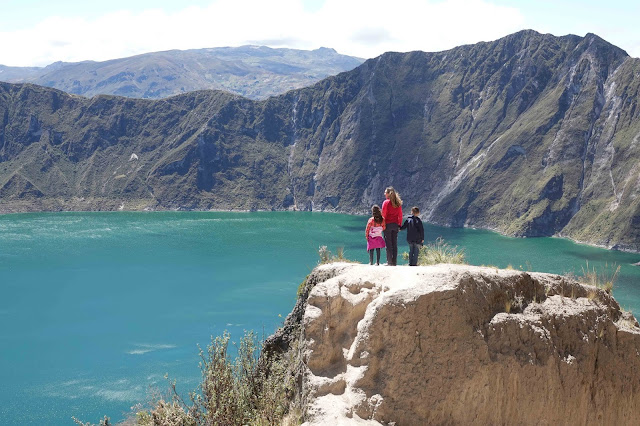Vulcan Cotopaxi, at 19,347ft is the second tallest volcano in Ecuador. It last erupted in 2015 and the park remained closed to climbers for two years. It was first summited in 1872 and is now climbed by an estimated 5,000 people each year. It takes two days to traverse the glaciers and reach the summit.
The first thing you notice upon entering Cotopaxi National Park are the densely packed pine trees lining the road. As you continue they become much taller and thinner until you reach paramo- the area above the treeline and below the permanent snowfield.
Tambopaxi is the only option for lodging or food inside the park. It's nestled in a spectacular location with beautiful views all around. The restaurant has two full walls of windows with a lounge for guests to enjoy the view. Above the restaurant are large hostel-style rooms one for males and another for females.
Our room was located in a second building which comprises six private suites. We had access to a private two-story lounge with floor to ceiling glass walls for gazing at Cotopaxi.
Above is the lounge, below the view from our room.
After lunch, we set out for a hike to explore the area.
Closeup of the glaciers and fresh snow on Cotopaxi. Often the visibility is low here and people come but never get to actually see the volcano. For this reason we stayed three days in the hopes that we'd see it one of those days. We were super lucky to have a beautiful, clear views of it.
While eating lunch, we noticed a group of cowboys moving cattle across the land.
The Andean Condor is one of the largest birds in the world! These birds stand 4 feet tall, have a wingspan of 10 feet and can weigh as much as 33 pounds! They need the strong winds over the Andes mountains to keep them in the air. They reproduce slowly, having only one baby every other year.
Jorgen noticed a striking Carunculated Caracara (below) fly to its nest on a cliff,
so we were able to watch two of them interact in the nest for quite some time.

Our last day we spent two hours on horseback exploring thru this beautiful terrain and it was amazing! Our guide pointed out four different volcanos, some comical shaped and some rugged. The trail took us thru shallow rivers and past the remnants of a less fortunate horse.
Goodbye Cotopaxi! Thanks for the memories!









































































